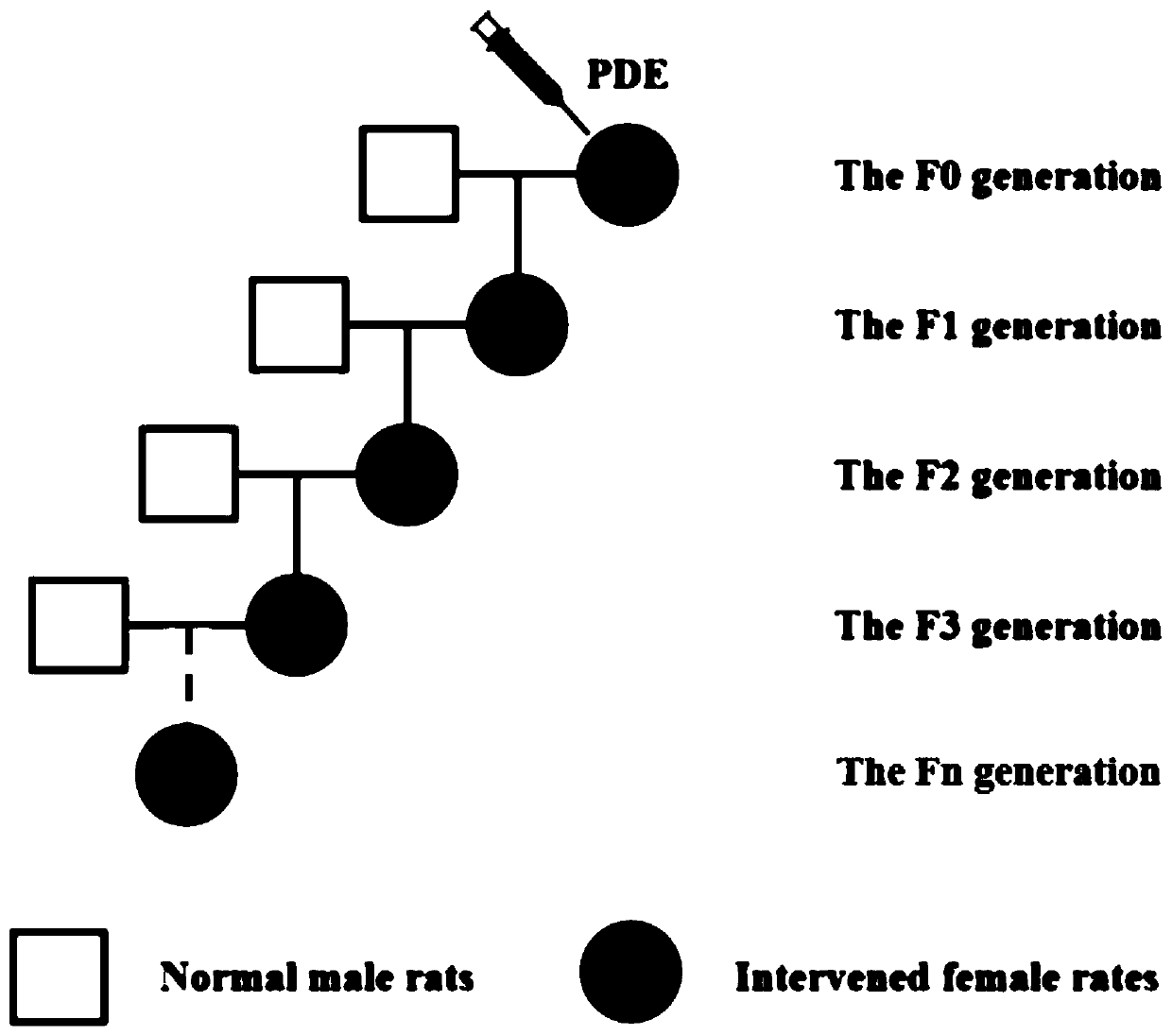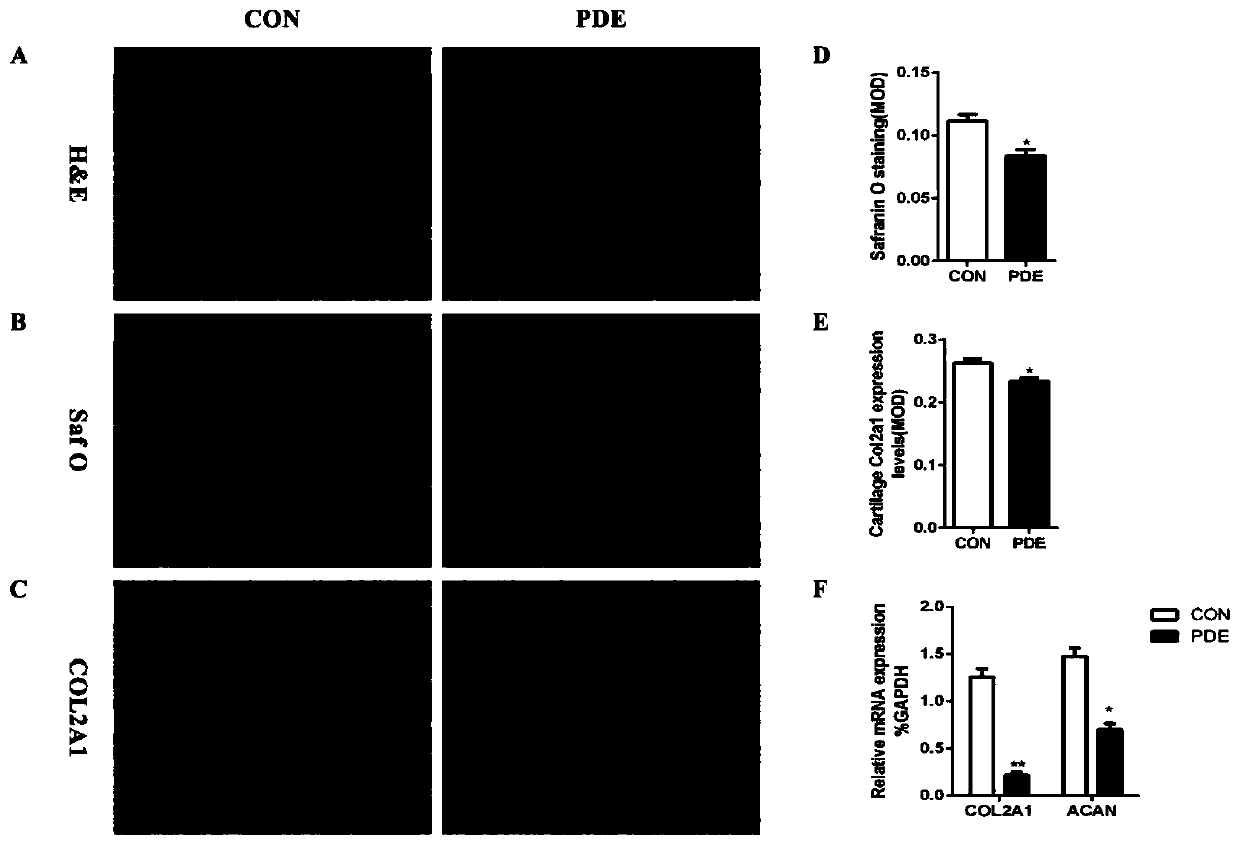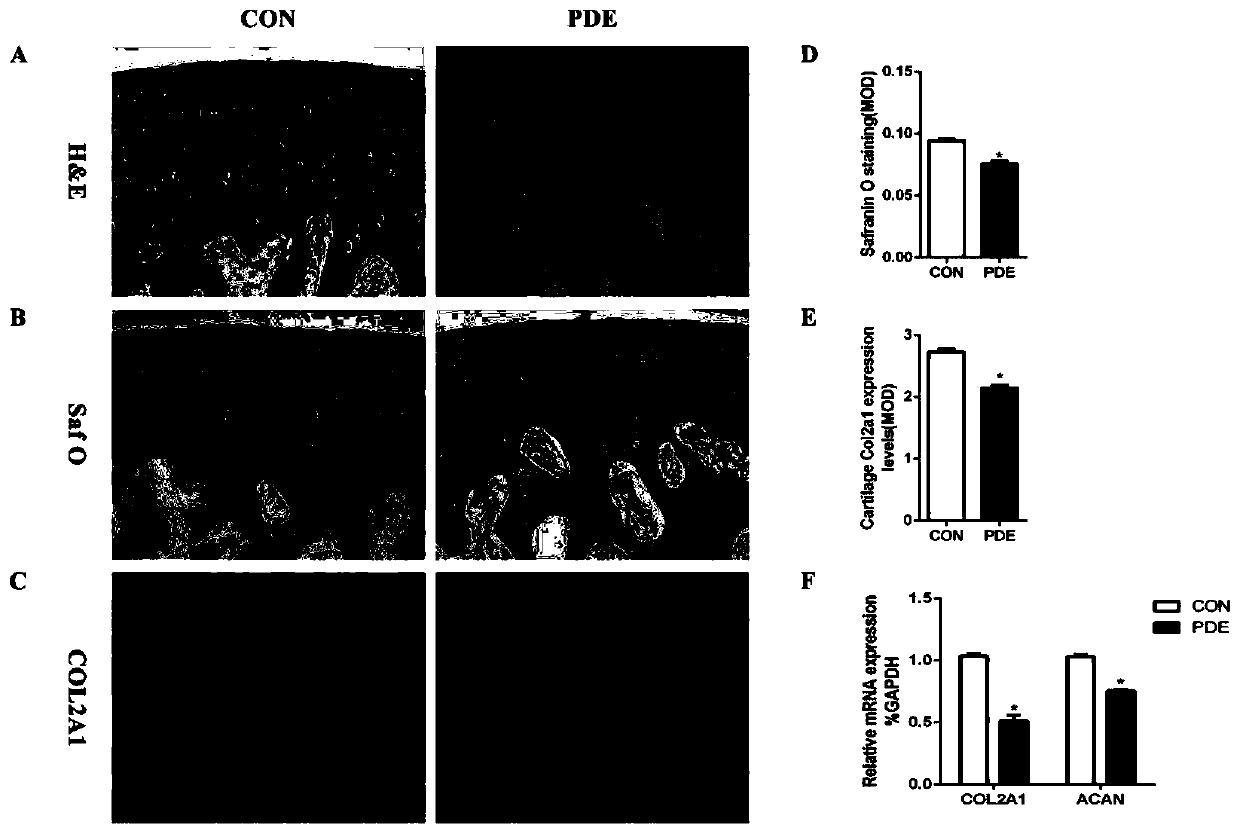Construction method of low-quality articular cartilage animal model based on epigenetic modification and application of construction method
A technology of epigenetic modification and animal model, which is applied in the field of construction of low-quality articular cartilage animal models, can solve problems such as multi-generational genetic animal models of chondrodysplasia, and achieve the effect of simple and easy method
- Summary
- Abstract
- Description
- Claims
- Application Information
AI Technical Summary
Problems solved by technology
Method used
Image
Examples
Embodiment 1
[0055] [Example 1] Construction of a low-quality articular cartilage animal model based on epigenetic modification
[0056] 1. Construction method
[0057]SPF grade normal Wistar rats were purchased from Hubei Provincial Center for Disease Control and Prevention, animal license number: SCXK (Hubei) 2012-2014. This study was approved by the Ethics Committee of Wuhan University Medical Center, and was carried out in strict accordance with the relevant treatment guidelines of international laboratory animal protection certification and evaluation institutions. The experimental animals were kept in a barrier environment with a temperature of 22-25° C. and a humidity of 50%, with 12 hours of day and night alternation. 12-week-old female Wistar rats (180-220g) and males (260-300g) were caged together at a ratio of 2:1 for males and females every night. On the next day, the vaginal secretion smears of the female rats were checked, and the vaginal plug observed under the microscope ...
Embodiment 2
[0073] [Example 2] Using the low-quality articular cartilage animal model based on epigenetic modification constructed in Example 1 of the present invention to explore the epigenetic mechanism (applied to the study of the mechanism of fetal-derived adult osteoarthritis)
[0074] 1. Method steps
[0075] 1.1 According to the method in Example 1, a low-quality articular cartilage animal model based on epigenetic modification was established.
[0076] 1.2 Use the RT-qPCR method to detect the TGFβ signaling pathway indicators of F1 female offspring in utero and F1 / F2 / F3 female offspring 12 weeks after birth, including TGFβ, TGFβR1, SMAD2, SMAD3, and SOX9. RT-qPCR experimental steps and primers used refer to Example 1.
[0077] 1.3 Use immunohistochemical methods to detect the TGFβ signaling pathway indicators in F1 female offspring and F1 / F2 / F3 female offspring 12 weeks after birth, including TGFβ, TGFβR1, SMAD2, and SOX9. Refer to Example 1 for immunohistochemical methods and e...
Embodiment 3
[0085] [Example 3] Application of the low-quality articular cartilage animal model based on epigenetic modification constructed in Example 1 of the present invention in the papain damage experiment
[0086] 1. Method steps
[0087] 1.1 According to the method in Example 1, a low-quality articular cartilage animal model based on epigenetic modification was established.
[0088] 1.2 F3 progeny of 12-week-old female rats, two litters of rats were taken from the control group and the dexamethasone-treated group (PDE group).
[0089] 1.3 Papain damage test: Inject 4% papain and normal saline solution into the left knee joint cavity of each rat, each injection volume is 0.1mL, inject every other day (1.3.5.7), treat for 1 week, and observe for 2 weeks; After 15 weeks, the knee joints of the rats were taken, stained with Safranin O Fast Green, and the cartilage quality of the knee joints was evaluated using the Mankin's scoring system. The Mankin's scoring system consists of four e...
PUM
 Login to View More
Login to View More Abstract
Description
Claims
Application Information
 Login to View More
Login to View More - R&D
- Intellectual Property
- Life Sciences
- Materials
- Tech Scout
- Unparalleled Data Quality
- Higher Quality Content
- 60% Fewer Hallucinations
Browse by: Latest US Patents, China's latest patents, Technical Efficacy Thesaurus, Application Domain, Technology Topic, Popular Technical Reports.
© 2025 PatSnap. All rights reserved.Legal|Privacy policy|Modern Slavery Act Transparency Statement|Sitemap|About US| Contact US: help@patsnap.com



